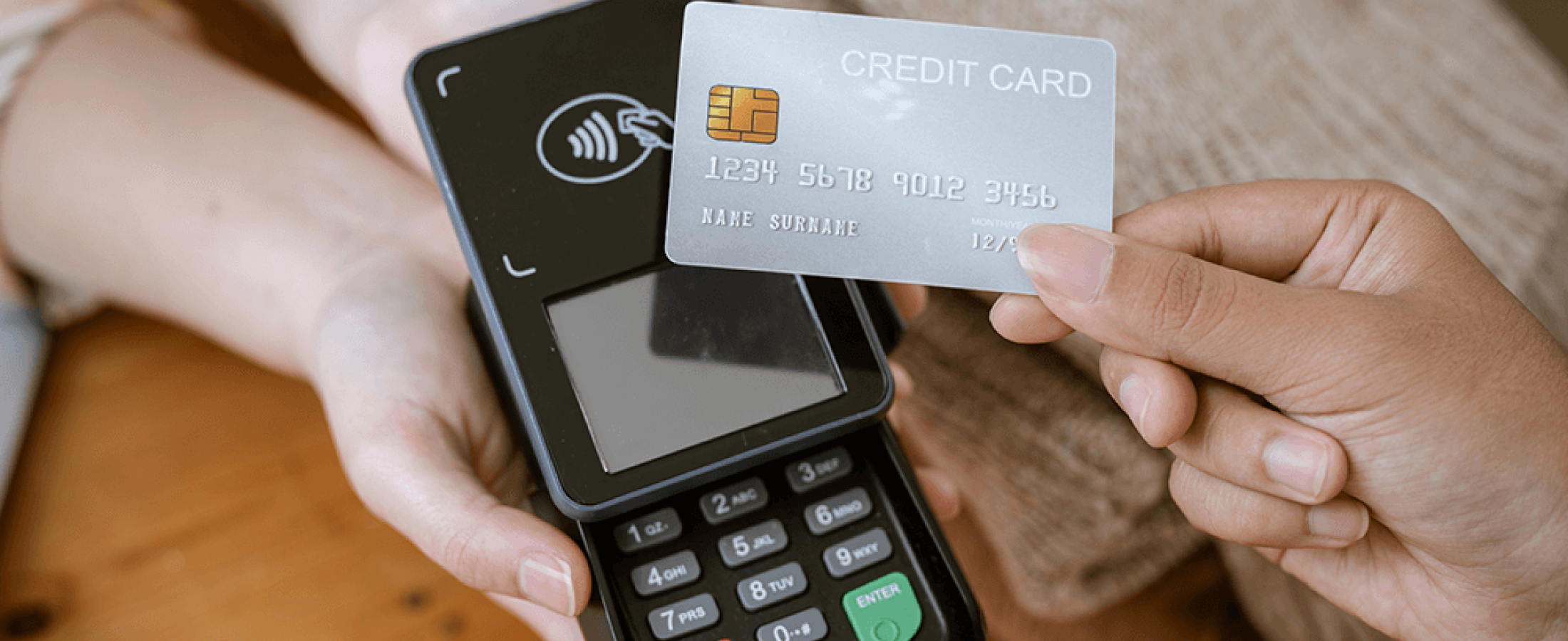
Unlocking the Benefits: Discover the Advantages of Rewards Credit Cards
Looking for more in a credit card? A rewards credit card may be the right solution for you. Designed to offer benefits such as discounts and cash back, a rewards credit card rewards you for everyday transactions. Before you apply, see how a rewards credit card works and its benefits every time you swipe your card.
What is a Rewards Credit Card?
Rewards credit cards are like non-rewards credit cards:
- Transactions at the end of each billing cycle
- Credit card statements with minimum payment and statement balance
If you pay the entire statement balance, you won’t be hit with interest on your purchases. If you only pay a portion, the remaining balance will roll over to the next billing cycle with any new purchases and you’ll start accruing interest.
Rewards credit cards have a bonus for eligible purchases that non-rewards credit cards don’t offer. Credit cards may have different features that focus on the type of reward and how to earn them. You can earn cash back, points, miles, or other rewards when you use it. Some rewards credit cards may offer additional protection on eligible purchases that need repair, replacement, or reimbursement of lost or stolen items. Coverage may vary depending on issuers and credit cards.
If a rewards card is right for you, you’ll need to meet some criteria:
- Good or excellent credit
- Don’t carry a balance
- Travel regularly
- Loyal to an airline or hotel
- Spend in specific categories such as gas, groceries, and restaurants
What Type of Reward Works for You?
You may decide what type of rewards credit card works best for you. Is it cash back or points to use toward merchandise, travel and more? Racking up the airline miles for future travel? Credit cards offer one of three types of rewards:
- Cash back: Earn a percentage on eligible purchases, and your balance accrues on your credit card. Request a statement credit, check, bank transfer, or your credit card’s other redemption options to receive your cash back rewards. The rewards rates often range from 1% to 2% of purchases, but credit card issuers’ offers may vary. Some issuers may offer bonus rewards for only certain types of purchases.
- Points: Cardholders can earn a fixed number of points per dollar spent. The points value may vary based on what you redeem them for. Credit card issuers may offer different rewards rates and redemption options. Some issuers often set a specific value but may offer a higher value for certain redemptions. Points may be more flexible to redeem for merchandise, cash back, gift cards, travel purchases, concerts, and sporting events.
- Miles: This option is usually tied with a co-branded airline or hotel credit cards that allow you to earn rewards for flights, seat upgrades, and other travel-related expenses. Your options may be more limited than earning cash back or points. For every dollar you spend, you may earn a fixed number of miles even though you could earn a higher rate for certain purchase categories. Like a points credit card, you could earn miles on restaurants, grocery stores, airline purchases, and more.
Each credit card issuer may offer different rewards options, so make sure to review the terms and conditions for complete rules.
Earning Bonus Rewards on Your Credit Card
Credit cards may use a system to determine the bonus rewards you earn. There are a variety of credit cards that offer different bonus reward structures:
- Flat-rate rewards offer the same rewards rate on all purchases.
- Tiered rewards offer bonus rewards on purchases from specific categories or merchants.
- The card issuer changes rotating bonus rewards on specific categories each quarter. You may earn points on entertainment during one quarter and the next earn points on different retailers.
- Bonus rewards are usually offered when you sign up for a credit card. You’ll receive a reward when you use your credit card for a certain amount of time or spend a minimum amount.
- Dynamic rewards allow you to change your bonus reward category or they may adjust based on your spending.
- Category rewards allow you to earn different levels of cash back for different categories. Your credit card may give a larger percentage of cash back on gas, restaurants, and grocery stores, but only a lower percentage on all other purchases.
Purchases in non-bonus categories may still be eligible for rewards if your credit card has a tiered, rotating, or dynamic structure.
Be Strategic with Your Rewards
Don’t go crazy when it comes to using your rewards credit card. A well-thought-out approach to earning and redeeming your rewards and unnecessary overspending could help fully take advantage of your rewards:
- Watch your spending. Don’t make purchases and overspend just so you can earn rewards.
- Plan for your intro bonus. If a credit card issuer offers a welcome bonus, you may have to spend a specific amount of money. You may want to apply before making a large purchase and combine your spending to reach the required amount.
- Use your card for purchases in the bonus categories.
- Know about your redemption options. The rewards value may vary depending on when you redeem them.
- Be aware of cash back spending caps. Some credit cards may place a threshold on cash back earnings on some spending categories. A credit card may pay a percentage on up to a certain dollar amount each quarter on a particular category. Once you hit the cap, any additional purchases will earn a lower standard rate until the next quarter begins.
Review the Credit Card Fees
Be sure to review all credit card terms and conditions and specifically any fees associated with obtaining and using the card prior to applying. Each card has its own set of terms and conditions as well as various potential fees such as annual, balance transfer, cash advance, and late payment fees. Before you sign on the dotted line, make sure that you understand all of the possible fees that you could potentially incur.
Tips to Help You Boost Your Credit Score
If you’re looking to improve your credit score, there are ways you can boost your number. Although building your credit score depends on the credit situation, here are some steps you can take to rebuild.
- Always pay your bills on time. This is the most important thing you can do to increase your credit score. Even one late payment can have a negative impact.
- Pay at least the minimum due. Payment history makes up a large part of your credit score, so when you pay your bills, make sure you’re paying at least the minimum amount due.
- Don’t use up all your credit. People who use less of their available credit are considered lower risk, and may receive a higher score. A general rule of thumb is to only use 30% or less of your available credit.
- Pay off your credit card balance. Paying off your credit card balance lowers the total amount of money you owe, which is a big part of your credit score.
- Put due dates on your calendar. Try putting the due date of each of your bills on your calendar. This will help you avoid missed payments, which may lower your credit score.
- Set up automatic payments. Automatic payments are a bill-pay option that automatically pulls funds directly from your bank account when a bill is due. Be sure you have enough money in your account to avoid overdraft and bounced check fees.
- Build your credit history. A person with a longer credit history is considered less of a risk than someone who recently began using credit.
- Check your credit reports regularly. Request a copy of your credit report and review it to make sure your information is correct. You should check from each of the major credit bureaus at least once a year. You are entitled to a free credit report once a year from each credit reporting agency as per the Fair and Accurate Credit Transaction Act.
Apply Today for an Adirondack Bank Personal or Business Credit Card
Whether you want to pay down balances faster or cash back, we have two ideal cards for you. No matter you choose a personal or business credit card, you’ll enjoy features such as 24-hour cardmember service and convenient and flexible purchasing power.
For complete details on our credit cards and its features, contact a branch representative today or visit adkbank.com.
The information in this article was obtained from various sources not associated with Adirondack Bank. While we believe it to be reliable and accurate, we do not warrant the accuracy or reliability of the information. Adirondack Bank is not responsible for, and does not endorse or approve, either implicitly or explicitly, the information provided or the content of any third-party sites that might be hyperlinked from this page. The information is not intended to replace manuals, instructions or information provided by a manufacturer or the advice of a qualified professional, or to affect coverage under any applicable insurance policy. These suggestions are not a complete list of every loss control measure. Adirondack Bank makes no guarantees of results from use of this information.

